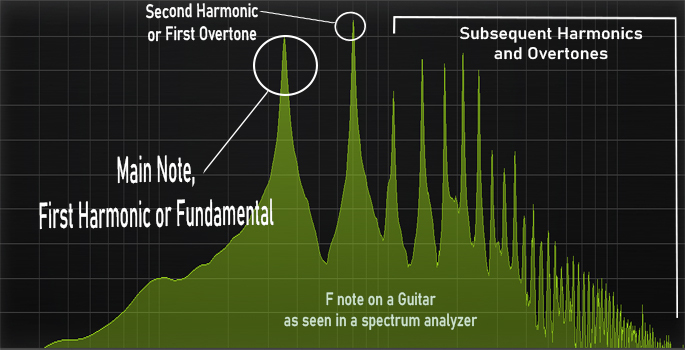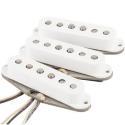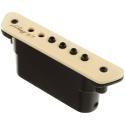What is Tone in Music? An Audio Engineer's Perspective

The concept of tone in music has been a topic of debate for a long time. It is subjective, meaning that everyone has their perception of it.
However, as a musician, it is crucial to have a comprehensive understanding of tone and its purpose. In this article, I will explain the meaning of tone and what it commonly refers to. You will learn about:
-
What is Tone in Music?
-
Timbre and Tone
-
Why Is Musical Tone Important?
By better understanding tone, you can use this term more appropriately, which will help you communicate your message better with your audience, especially with other musicians.
What Is Tone In Music
From a musician's perspective, tone refers to the character of sound and how musical sound is perceived. It is a language used to effectively convey a range of emotions and meanings, making it a powerful tool for expression and communication.
The same principle applies to tone in writing and speech, where tone evokes an instinctive response. This makes tone crucial in establishing a strong connection with your audience and making a lasting impact.
Given this definition, tone is unique to each musician, affected by many variables, including musical preference, playing technique, instrument, effects, amps, and everything in between. Other instruments like wind and percussion instruments have their own distinct tones, including human vocal cords.
In short, tone is how a musician sounds. To have a good tone, is to sound good to your ears and, more importantly, to your listeners.
Other Definitions of Tone
You could also define the word tone from a more technical and academic perspective. For a closer look, here are the three most common definitions of musical tone:
-
Sound Quality or Timbre: The definition most people are familiar with is sound quality. Most of the time, when musicians and audio engineers talk about musical tones, they are really talking about "timbre."
Different instruments and voices produce different tones, even when playing at the same pitch. And since EQ affects timbre, knowing what is EQ in music is crucial in getting a good tone.
It will help you assign specific instruments based on their tonal character. For example, a bass guitar occupies the lower frequencies, while a guitar has the mid- to high-frequency. This also applies to the nuances of a singer's voice.
-
Note Intervals: In music theory, the term intervals defines musical tones and their distance from one another. A musical scale comprises a set of specific musical notes divided into 12 equally spaced intervals.
One musical note interval is called a semi-tone (also called halftone or half step), and two note interval is called whole tone, or just tone (also called whole step).
Another commonly used term in music theory is the tritone, which is a musical interval that includes three adjacent whole tones or six semitones.
-
Pitch: Sometimes, tone can also refer to the frequency or pitch of a musical instrument because of how pitch affects tone.
A good example of how tone is affected by pitch is the voice of Alvin from Alvin and the Chipmunks. This voice is actually just a normal human voice. But, by increasing the frequency, they're able to raise the pitch into the signature chipmunk sound, which substantially changes the overall tone.
Still, there is a significant difference between pitch and tone. Frequency is essentially the speed at which sound vibrates, where faster means higher pitch and slower results in lower frequencies. While tone is the overall quality and mood of a sound.
Timbre and Tone
Harmonics, Overtones, and Fundamental:
When observing a sustained note from any musical instrument, it can be seen that smaller peaks at specific intervals accompany the loudest frequency.
The fundamental frequency denotes the note's pitch, while the smaller peaks represent harmonic overtones responsible for altering the timbre or tone of the note.
Harmonic overtones tend to vibrate at multiples of the fundamental frequency. As these multiples exceed twice or thrice the fundamental, they start producing different timbres by varying in volume relative to the fundamental frequency.
This phenomenon occurs because the amplitudes of the harmonic overtones change proportionally to their frequencies.

More Details About Timbre
When discussing tone, the term timbre comes into play, which refers to the quality or character of different sounds.
t is important to note that even when playing the same note on different instruments, different sounding results are produced due to the balance between the fundamental frequency and harmonic overtones, also known as timbre.
Timbre is shaped by nuances in harmonics and overtones in relation to the fundamental, and the shape and size of an instrument contribute to the tone it produces.
These characteristics cause varying resonances in the instrument's body, distinguishing one instrument or voice from another.
For instance, if we play an F note on a guitar and wind instruments like a clarinet , you will notice that they sound different. The subsequent harmonics or overtones of the clarinet are different than those of the guitar.
This is because a collection of harmonics creates a complex tone.
However, each instrument has almost identical fundamental notes in the same octaves. If you remove the other frequencies and focus on the fundamental note, you will hear that both instruments sound the same.
This first note, minus the subsequent harmonics and overtones, is called a "pure tone." It is worth noting that only a few instruments can produce an almost pure tone, with the sound produced by a tuning fork being a classic example. However, they are rarely used in musical applications.
Why Is Musical Tone Important?
Tone has a significant impact on the overall sound of your music. When making music for a particular purpose, you will want it to have a certain tone. This is because certain tones work for certain types of music. Variations in tone will also convey a different emotional response.
A good example is the typical broken heart sad song. You will want it to create a sense of sadness in listeners, so warm and dark-sounding tones work best, like ones from a piano keyboard.
On the flip side, ukuleles create a happy tone that suits celebrations and other good mood themes. This emotion and mood-setting ability is why tone is considered to be one of the four main foundations of music, alongside pitch, volume, and rhythm.
Tone can completely change the overall vibe of a song and is crucial for producing a good musical piece. For classical guitar and acoustic guitar, you can change the timbre of your tone just by changing the position of your picking hand and by adjusting how you pluck or pick the strings. Electric guitars have more options which include effects and guitar processors.
You also have to get the tone of your recording right, especially if you are making audio for clients. Audio engineers are expected to adjust a song's tone in post-production (through frequencies and amplitude) will help you get the right feel for the song. And adjustments are made in the context of human hearing.
So, from live performance to music production, you need to have the right musical tone.
Final Thoughts
There's no denying the importance of tone in music, it lets you convey emotions and meanings in music through changes in timbre.
Your tone interacts with pitch, scale, rhythm, and volume - to create the overall mood and feel of your music.
As an audio engineer, knowing the tone is essential to allocate each instrument or voice to a specific location in the mix where they will sound optimal.
Every instrument or voice has its unique sound, making it imperative to understand tone. You can create music that suits specific occasions with a complete grasp of tone.
Moreover, it allows you to express yourself better by selecting the appropriate tone and color for your work.
As a musician, I see a good tone as a sure sign of mature musicianship. Tone is a fundamental aspect of music, and its proper use is critical.
Frequently Asked Questions
Can Tone Change Throughout a Piece or Song?
Yes. Utilizing varied instruments while maintaining the same melody can enhance the musical progression of a song. For guitarists, this involves adjusting the knobs or altering the pickup selector to suit different parts.
Additionally, effects pedals such as distortion, delay, and reverb may be employed. In the case of classical compositions, specific motifs may be reintroduced into the piece using different instruments.
Significance of Tone In The Musical Genre
The role of tone in defining musical genres is crucial. For instance, classical instruments' distinct tonal and melodic characteristics define classical music.
On the other hand, rock music relies heavily on electric guitars and distortion to achieve its signature gritty but warm tones, while acoustic guitars play a central role in folk music.
Although some genres may have emerged by breaking conventional rules, tone remains a significant factor in classifying music.
How Can Tone Affect Listeners?
The tonality of a piece or song has a crucial impact on listeners' emotional response and engagement. A precisely crafted piece can captivate an audience's attention, particularly if they can relate to its theme.
Contributors:
- Jerome Arcon - Co-writer
- Jerry Borillo - Illustrator












